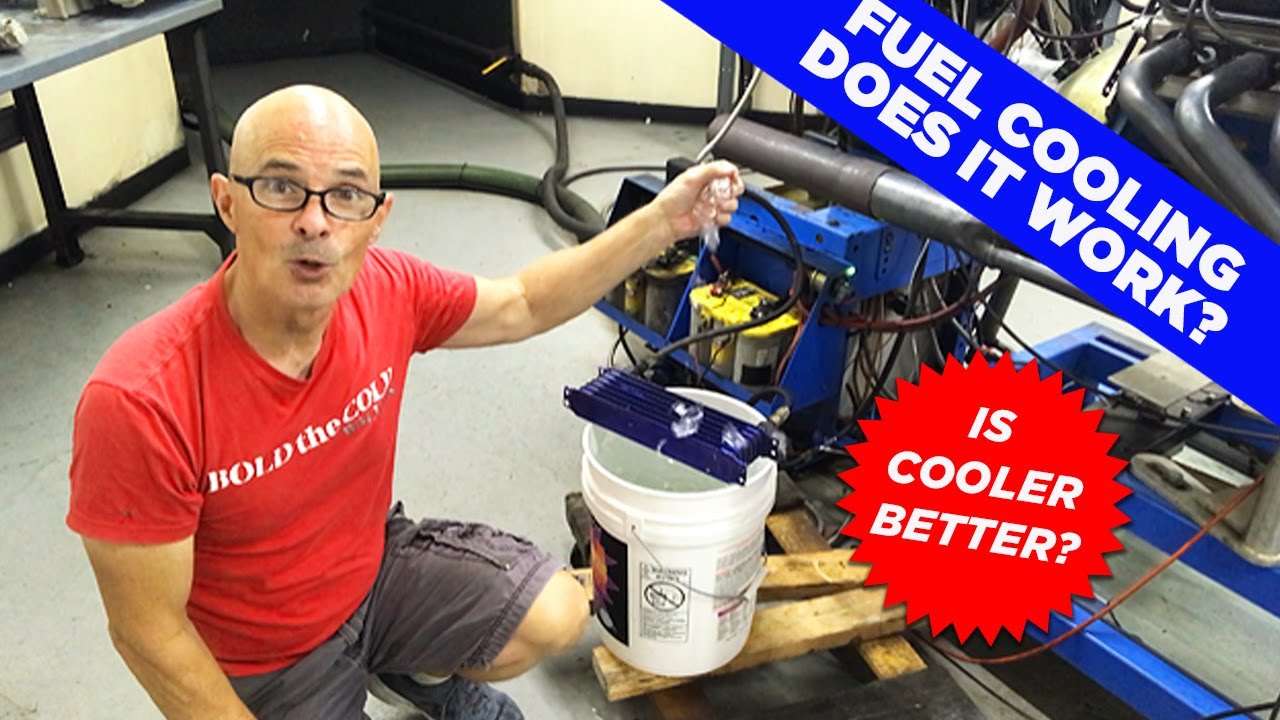Cooling fuel is nothing new, in fact most drag race cars in the 1970s had a fuel cooler under the hood, but in recent years injected nitro cars have been going through the process of cooling fuel before putting it in the car so that it helps cool the intake charge as it atomizes. There is absolutely reason to do so as the performance difference can be measured. But what about gasoline in a fuel injected V8 engine? Richard just did some testing and not only did he get the fuel as cold as possible, but also pretty hot. What did cold and hot do to the performance numbers?
Video Description:
HOW MUCH POWER DOES COOLING YOUR FUEL ADD? WE KNOW THAT A COOLER CHARGE TEMP ADDS POWER, BUT DOES COOLING YOUR FUEL ALSO COOL THE CHARGE TEMP? DOES AN EFI MOTOR BENEFIT FROM COLD FUEL? CHECK OUT THIS VIDEO WHERE I RAN A MODIFIED, FUEL-INJECTED 5.0L 302 WITH HOTTER AND COLDER FUEL. USING A OIL COOLER AND ICE WATER, I WAS ABLE TO DRAMATICALLY LOWER THE TEMPERATURE OF THE FUEL THROUGH THE MOTOR. THE QUESTION IS, DID IT MAKE ANY EXTRA POWER?






















I have a 1984 Dodge Daytona 2.2 TBI single point injector (Non-Turbo) 99HP Stock Eliminator car, and it has a single injector in an upright Bosch throttle body on top of the rear feed intake manifold and have tested your theory using an underhood sealed cool can using ice water. And it does make more power as it is able to atomize because it is not positioned in the intake or the direct cylinder port injected, though the injector up high in the throttle body and faces pointing straight down spraying a cone split by the full throttle single throttle blade into the bottom of the manifold then air intake through the throttle body strikes the injector fuel cone at a 45 degree angle to the spray cone breaking up the cone further helping with atomization, though the fuel/air mixture then (with some pooling happening in the intake) cools the intake and the 4 short runners itself from the cold gasoline VP C-12 or Sunoco 110/Purple, must make a 90 degree right (cylinder 1&2), and left (cylinders 3&4), forward turn through the runners to the intake valve pockets…From injector tip to the intake valves are all nearly equal lengths and measures about 16″ each give or take 1-2 inches.
The underside of the intake has a pocket with inlet and outlet to pre-heat /coolant or water before the heater control valve, but it is a dedicated race car only now, so that is dry (all HVAC items, hoses, etc. Deleted/removed now), and blocked off, which has actually helped keep the intake temp cooler even though there is a wrapped Hooker header directly below it.
Running that dry has also helped the cold fuel in cooling the manifold as the water made it a heat sink.
Mind you, it is a low HP/Heavy FWD car at 25.00 Lbs per HP running in the slowest Stock Elim. Class in the category (now DF/S…to EF/S 99HP@2,75 lbs), it used to run in GF/SA@2,763lbs/110HP. But a 2/10 second pick-up running a cool can vs not running one is a major difference, the difference between class winner and not being one. (To be fair though, running a cool can, means manifold is iced also before a class race. (Those are run heads up, vs all out of class, but in category are simply bracket races up to my 17.45 1,320 ft. Class index).
My combination is somewhat of a special case, as post 1984, they realized what a snail the Daytona was, that they decided in 1985 to slap turbos on all of the Daytona/Laser and other Chrysler products in the economy smogged class cars.
I am seriously the only one that has run the 84 TBI single point (non-turbo) Daytona, and am usually paired at least when it ran last waaay back in 94-97 mis-classified at 110HP in GF/SA against earlier carbed Dodge Omni’s, since then I was re-classified at 99HP (Almost 300 lbs lighter), same Index, same National Record minimum. And GF/SA, FF/SA as classes were done away with.
So, hard to make many comparisons, except this car on track or dyno, cool gas, vs no cooling. Engine is now at the machine shop awaiting forged Ross pistons to arrive soon.
Stay tuned, will update.